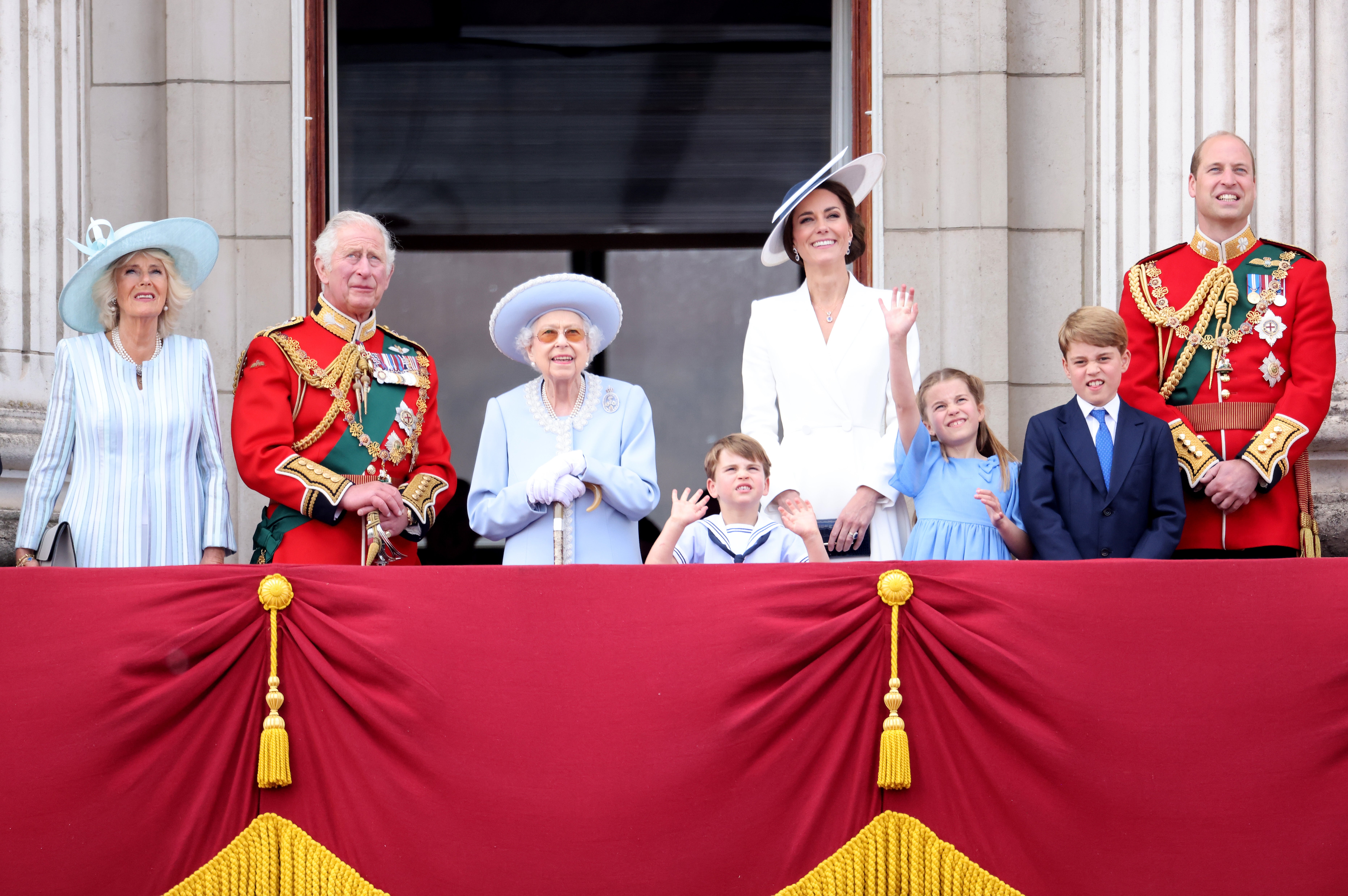The longer the Queen lives, the higher the stakes rise on one key question
Elizabeth II has been an anchor of continuity in a sea of change, writes Suzannah Lipscomb. What will happen once her reign ends?


Not many crowned monarchs get to mark four jubilees. In all of global history, only two have reigned for longer: Kings Bhumibol Adulyadej of Thailand and Louis XIV of France. On 12 June, Queen Elizabeth II will move up into second place, with only Louis XIV’s 72-year-and-110-day record to beat: she’ll have to make it to 27 May 2024 to do so.
Knowing that Louis became king when he was five and was succeeded by his great-grandson gives us some sense of how unusual her reign is.
In these 70 years, the Queen has been an anchor of continuity in a sea of change. Since 1952, the Empire has decolonised and Britain’s geopolitical power declined, the British welfare system was created and healthcare became free at the point of delivery.
The UK joined and left Europe, thousands of immigrants enriched British culture, the status of women was transformed, homosexuality was decriminalised, and huge advances were made in medicine, science and technology.
Society too has transformed: moving from deferential to irreverential – or perhaps our reverence has simply shifted to different gods. Either way, this rare, extraordinary jubilee provides an apt moment to reflect on Britain’s changing relationship with the royal family and what the future might hold.
In 1952, genuine grief at the early death of George VI combined with affectionate enthusiasm for the fresh-faced queen. US president Harry Truman described her as a “fairy princess”; Princess Margaret called the coronation a “phoenix-time”. About half the adult population of Britain – somewhere between 20 and 27 million people – watched this first televised coronation. There were only 2.5 million television sets in the country.
But the honeymoon didn’t last. Within a decade, the royal family started to seem stuffy, old-fashioned, and outdated. Some changes were made: the Queen’s first televised Christmas broadcast, an end to debutantes being presented at court, a shake-up of the running of Buckingham Palace.
But more was needed. The Queen’s delay in visiting South Wales in October 1966 after the tragedy of Aberfan – in which a pit-heap collapse killed 146 people, mostly children – was a case in point. The Crown got it wrong: she held back so as not to disturb the rescue work but also because of a surfeit of emotion rather than a lack.
Mrs Beatrice Williams, whose family lost seven relatives, said afterwards: “She was very upset. She was the most charming person I have ever met in my life. Really down to earth.” But that was precisely what a country in the midst of throwing off class hierarchies wanted to see.
The 1969 film about the royal family’s domestic life – which shows them preparing a barbecue, the Queen buying the young Prince Edward an ice cream, and so on – was regarded askance by some, but it was the right decision. More people watched it than watched humankind land on the Moon. The Observer described it as “a perfect public relations exercise, confirming long-held suspicions that the royal family have all along been human”.
It was this human dimension that, in the 1960s and 1970s, made the Queen into such an important tool of British “soft power” – what Professor Joseph Nye defines as “the ability to produce outcome through attraction rather than coercion or payment”.
Her reconciliatory state visit to Germany in 1965, her state visit to Japan a decade later, where a million people poured onto the streets to see her, and 75 million watched a live broadcast of her speech – and being the first female head of state to visit Saudi Arabia in 1979 – meant that in despite of its decline, Britain retained authority on the world stage. The only serious faux pas – when the Australian governor-general dismissed the country’s elected prime minister in 1975 – caused a constitutional crisis, but it was not Her Majesty’s doing.
Even at home in the 1970s, despite (or perhaps, because of) the context of industrial disputes, huge inflation, and economic difficulty, the royal family’s image was largely positive. The glamour of the first royal wedding broadcast in full in 1973, pageantry of the county tours of the silver jubilee (she visited 36 counties in three months), and excitement around the birth of the Queen’s first grandchild kept things buoyant.
But reactions to the royals were changing. Familiarity bred contempt. As the appetite for royal weddings and births – Charles and Diana, Andrew and Fergie, Princes William and Harry – grew, the tone of the press became less indulgent and more abrasive. Regularly skewered by Spitting Image, the royals were ridiculed after Prince Edward organised the PR disaster (though fundraising success), It’s a Royal Knockout, in 1987.
In the face of high inflation, annual petitions to parliament for an increase to the Civil List produced furious headlines of “another royal pay rise” for “the richest woman in Britain”. Images of royals off on shooting and skiing holidays as British troops went off to fight in the Gulf War produced a sense of selfish entitlement at a time of national crisis. When Scottish nationalist Tom Nairn published his book, Enchanted Glass: Britain and Its Monarchy, in 1988, he concluded that “the monarchy was the quintessence of all that is worst in Englishness”.
This was all before the ghastly annus horribilis of 1992. In that relentlessly grim year for the Queen, three of her children’s marriages broke down and were subject to forensic public examination. From Princess Diana sitting alone before that monument to love, the Taj Mahal, to the Duchess of York topless on holiday, to Andrew Morton’s serialised book alleging that the Prince and Princess of Wales’s marriage had forced Diana into self-harm – everything was covered in lascivious detail by the papers.
Then there was the devastating fire at Windsor Castle in November 1992. The Queen asked for “a touch of gentleness, good humour and understanding” but got little. Royal finances were again scrutinised, and the Queen volunteered to give up the tax exemption granted to George VI in 1937.
Meanwhile, her groundbreaking overseas visits – to President Mitterrand’s France, to Germany (the first since the fall of the Berlin Wall, including a visit to Dresden, which had been devastated by Bomber Command in the Second World War) and her first state visit to Russia following the end of the cold war – enhanced Britain’s global standing but were little acknowledged at home.
And then, in the aftermath of the tragedy of the death of Diana in August 1997, the Queen’s decisions not to return to London immediately and not to fly the royal standard at half-mast (a constitutional nonsense, but The Sun called it “the final insult”) were seen as insensitive and out of touch. Her special live broadcast – only the second of her reign – started to turn the tide, but some questioned whether the monarchy could last at all. Political theorist Stephen Haseler dubbed her “Elizabeth the Last”.
Even in these bleakest of days, however, the Queen’s approval rating didn’t drop below 73 per cent – one most politicians would kill to have. A referendum in Australia in November 1999, to choose whether to keep the Queen as head of state or appoint a president, was considered a republican dead-cert, but ended 55-45 in favour of retaining the Queen.
But 2002’s sadness at the death of the Queen Mother and celebration at the golden jubilee to mark 50 years of the Queen’s reign marked the turning point. A million people gathered at Buckingham Palace for the “party at the palace” and album sales from the event earned the Queen a gold disc from the record industry.
The last 20 years have been choc-full of milestones: her 80th birthday, diamond wedding anniversary, a historic visit to the Republic of Ireland, the diamond jubilee, becoming Britain’s longest-reigning monarch, her 90th birthday, the births of her great-grandchildren, the inclusion of the first woman of colour in the modern royal family, the Queen sitting alone at the Duke of Edinburgh’s funeral.
In the light of recent scandals, it has become conventional to value the incumbent of the throne while simultaneously questioning the future of the royal family. As biographer Ben Pimlott wrote, people who are lukewarm about the monarchy love the Queen. So, what next?
As the longest-serving heir-apparent in British history, Prince Charles is experienced: he has helped his mother for longer than many monarchs have reigned. In recent years, he has been increasingly visible at his mother’s side or acting on her behalf. By all accounts, much of the recent decisiveness at dealing with Prince Andrew has come from him. Thoughtful, cultured and practical, his personal stock is on the rise.
A poll of 2016 suggested only a quarter of respondents wanted to see Charles succeed the Queen and more than half wanted Prince William crowned instead. In 2019, 64 per cent of 1,500 people polled wanted King Charles. It is an indicator of how much the tide has turned that, in her jubilee letter, the Queen could state her “sincere wish” that when “in fullness of time” Charles becomes king, “Camilla will be known as Queen Consort”.
To keep up to speed with all the latest opinions and comment sign up to our free weekly Voices Dispatches newsletter by clicking here
It would have been an unimaginable sentiment 25 years ago. The prince’s concerns with the climate crisis, sustainable agriculture and deforestation now look less like eccentricities and more like wisdom; Boris Johnson described him at Cop26 as having been a “prophet without honour”. The impact of Charles’s foreign visits is considered by diplomats to be “hugely important”. He may yet be an influential and popular king.
But there are challenges. In the immediate future, the publication of Prince Harry’s memoirs may be damaging. Barbados has removed the Queen as head of state; it may be that other countries will follow suit. Charles will accede long after the age of retirement – his may be a short reign. And then there’s the question of gender: it is easy to love a youthful young queen or a grandmotherly figurehead. What will it mean to have three generations of white, male monarchs in the years to come?
The longer the Queen lives, the higher the stakes rise on the question: has the Queen created a blueprint for monarchy in the modern age or does the model fit her alone? Can Charles and William survive constant comparison with a monarch whose missteps have been few, whose endurance under pressure is formidable, and whose longevity alone guarantees a hard act to follow? Time will tell.
Suzannah Lipscomb is a British historian and professor emerita at the University of Roehampton






Join our commenting forum
Join thought-provoking conversations, follow other Independent readers and see their replies
Comments